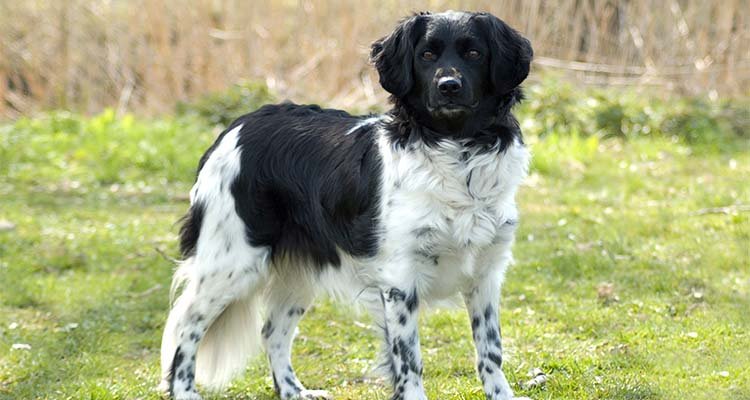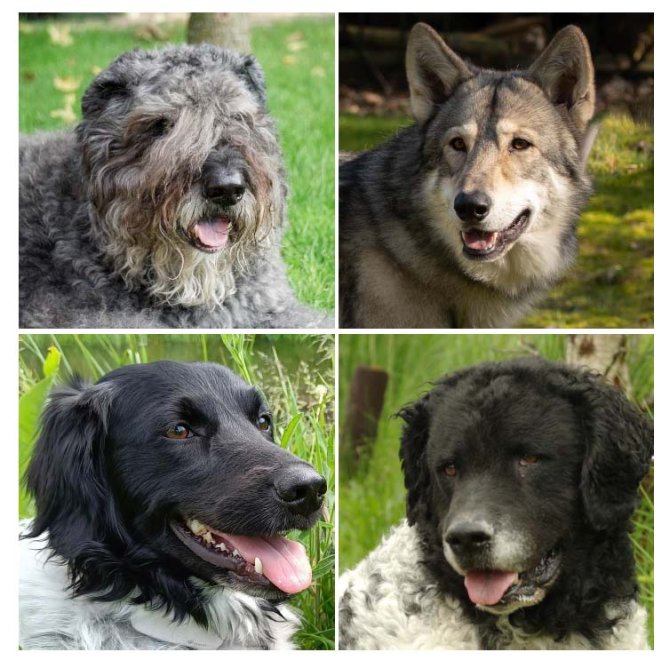
Project
Breeding for health in pedigreed dogs
Health is one of the most important aspects in dog breeding. Dog breed associations create breeding regulations and specific standards to which breeders need to comply. For each breed there is a so called “matrix of norms”, in which is specified which health problems should be tested for and which dogs should be used or banned from breeding.
By limiting the breeding with dogs that carry (specific) hereditary disorders the frequency of these disorders in the breed can be reduced. This can result in new rules in the association’s breeding regulations, for example prohibiting breeding with Bouviers with hereditary eye disorders. However, the concern is that excluding all animals with (predisposition to) specific disorders could be too strict and that this selection will raise the amount of inbreeding too much. Also other challenges play a role, such as that disorders often do not manifest until later in the dogs life, and thus might not be known at the time of breeding. Therefore, breeding associations struggle with finding balance between breeding for health traits and genetic management to keep inbreeding growth low.
Three breed associations (i.e. associated with Bouvier des Flandres, Saarloos wolfdog, Stabyhoun and Wetterhoun) are now looking for scientific rationale behind health measures in their breeding regulations. There are known solutions of which outbreeding (=crossing with animals from outside the breed club) is one, but possibly other measures such as genetic evaluation should play a role. For some breeds DNA is already collected and profiled for a large amount of dogs, but the translation to breeders and breeding practices still has to be made. Keeping breeders connected is another concern, whereas new rules and regulations should not lead to increased breeding outside the breed club.

Results How to set up breeding for healthy pedigreed dogs?
The “Science shop” of Wageningen University has set up this project in answer to questions from three breeding organisations, with the aim to provide knowledge on how to better breed for healthy dogs and use the latest insights from scientific developments. Next to dealing with health problems, genetic management to preserve genetic diversity and prevent high inbreeding rates is essential. A high inbreeding rate caused by using too few and too related dogs in breeding will harm the health of the dogs. Consequently, excluding too many dogs for health reasons will restrict the genetic pool and may cause a too high rate of inbreeding with subsequent health problems. A balance between breeding for health and restricting inbreeding must be found. This has led to the central question of this research: How to set up breeding for healthy pedigreed dogs? A healthy dog is the aim both of dog owners, breeding organisations and society in general. In this report 4 questions are treated:
- How to deal with a multitude of hereditary health problems in a breed?
- Can breeding value estimation help to reduce health problems in dogs and how to design it?
- What is the value of DNA genotyping for estimation of kinships and inbreeding and thereby improving the health of dogs?
- When and how to set up an outcross, and what does it contribute to the health of the dogs?
Tackling health problems is not easy, because the problems are complex and knowledge of genetics is often scarce. Although the task ahead is considerable, there are clear starting points. To manage inbreeding rates the use of mean kinships is most effective and recommended. Additional to that, this report provides specific recommendations on how to deal with the four subjects mentioned above:
- Dealing with a multitude of genetic diseases: Start with prioritising diseases to be bred against, based on their severity, frequency and date of onset. Monitoring them is essential, next to unravelling their genetic background. Cooperation between veterinarians, population geneticists and breeding organisations is needed. Use of the expertise in livestock breeding and of Wageningen University & Research (WUR) will help to develop a “weighted health index”.
- Breeding value estimation will contribute to decrease the prevalence of genetic diseases, especially polygenic diseases such as hip-dysplasia. This should start with education to increase the acceptance in the breeding organisations. Next it is recommended to investigate the possibility to join forces with foreign initiatives such as developed in the UK.
- DNA genotyping theoretically improves estimating inbreeding and relatedness. However, inbreeding estimates provided by commercial companies are at an individual basis while a population approach is needed. Furthermore, results of genotype based inbreeding estimates depend on the marker set used and the methot of calculation, both of which are not clear for commercial providers. A central database where all genotype results per breed are gathered is needed. More research on how best to estimate inbreeding and relatedness from genotype results is needed as well.
- Outcrossing can improve the genetic health of breeds, especially if fertility is strongly reduced. It is important to develop a plan with a clear goal. Outcrossing cannot replace other measures for reducing inbreeding rates. As soon as an outcross is finished former inbreeding rates will return. This implies that either outcrossing should be performed on a continuous base, or it must be combined with other measures. Genotyping can help to select dogs for breeding when look-a-likes are used for an outcross.
Most important, information and education in close collaboration with breed organisation is essential to organise support for each of the different measures to be taken.
Publications
- Wetenschapswinkel rapport 403 - Breeding for health in pedigreed dogs 2024. Hoving & Windig (Dutch)
- Het fokken van rashonden - Omgaan met verwantschap en inteelt (Kor Oldenbroek, Jack Windig)
- Inbreeding and litter size in Dutch pedigreed dogs (J.J. Windig1,2*, M.L. Margarita1 and H.P. Doekes)